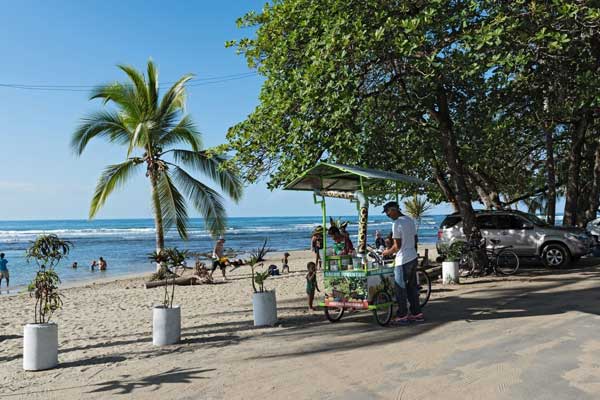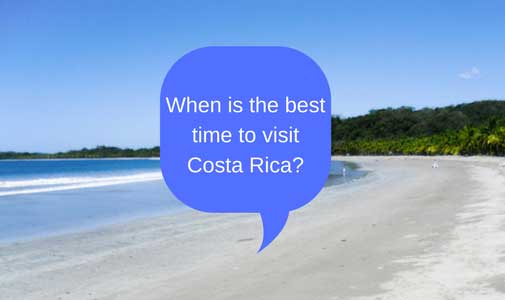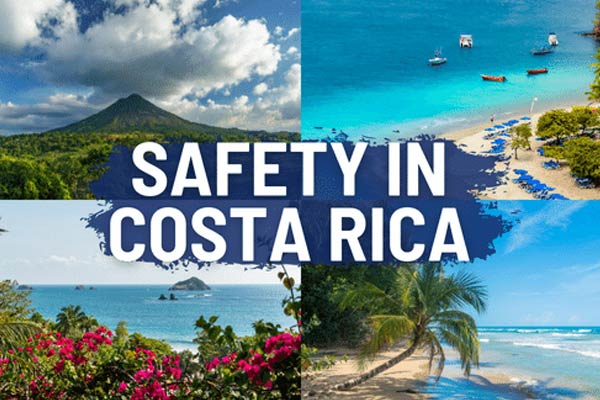Puerto Viejo: The Ultimate Tropical Paradise
White-sand beaches…Clear turquoise water filled with tropical fish…Palm trees swaying in the breeze…A laidback vibe, Costa Rica’s little-known Caribbean coast is the ultimate tropical paradise.
The Caribbean coast’s heart is the tiny town of Puerto Viejo de Talamanca, a fishing village turned tourist hub for the small number of visitors who make their way here.
Running from the port city of Limon to the border with Panama, 57 miles to the south, most expats and visitors stay in and around the fishing villages and beach communities of Cahuita, Manzanillo, Punta Uva, Playa Chiquita, and Playa Cocles.
Retire in Puerto Viejo

The year-round warm weather on Costa Rica’s Caribbean coast lends itself to outdoor activity like beach combing, snorkeling, surfing, and more. People tend to walk or bike everywhere and there are plenty of fresh fruits and vegetables, as well as seafood. All this contributes to a healthy lifestyle for expats of all ages.
Puerto Viejo is a rural area…the least developed region of Costa Rica. That means medical care is lacking. There are small clinics and doctor’s offices in the area, but they typically aren’t well-equipped. For emergency or specialist care, you must travel to the nearest public hospital in Limon, which is about 90 minutes from Puerto Viejo by car or bus. Many local expats go all the way to the capital, San Jose, which is a four-hour drive, to seek medical care beyond basic needs.
Still, many expat retirees without chronic conditions or serious medical concerns happily make their home in Puerto Viejo.
A huge benefit is that those who become legal residents of Costa Rica, under the pensionado program are able to join the government-run healthcare system, called Caja Costarricense de Seguro Social. Most people just call it Caja.
For a low monthly fee based on income, an expat single person or couple receives all the medical care they need, including prescription drugs, diagnostic tests, doctor visits, and surgeries.
When you live on the Caribbean it’s a small community. But it’s easy to meet people and make friends.
Dozens of nationalities are represented in Puerto Viejo, with a strong American and Canadian contingent; and plenty of Europeans, too. With so many English speakers the transition to a new life here is easy. Many expats have even started small businesses—cafes, restaurant, hostels, tour companies, microbreweries, and B&Bs. But, there are also retirees looking for a slow-paced life in a beautiful setting.
Lifestyle in Puerto Viejo

The vibe in Puerto Viejo is casual and thoroughly unpretentious. People from all backgrounds and walks of life come here to live and join an active and vibrant community.
A must-visit is the Saturday feria, or farmers’ market. Here local farmers offer up fresh, often organic produce grown in the area. The bounty of the tropics, including papaya, mango, avocado, and more is on offer, as well as fresh snapper and mahi mahi. It’s a great place to load up on groceries and catch up with friends—or make new ones.
A narrow-paved coast road parallels the beach, running through the jungle, with dirt and gravel roads leading off to beaches, many of which are usually empty, save for a few families gathered under the shade of the trees, often with hammocks hung for afternoon naps.
A favorite beach beverage, especially revitalizing on a hot day in the sun, is a pipa fria. Ice cold young coconuts, opened by machete by strolling vendors. That coconut water you pay $4 for a small box in the U.S. you get fresh in Costa Rica, a whole coconut’s worth for just $1.
There are no condo towers, large hotels, or mega resorts here. Just small villages and homes in the jungle, surrounding by nature. Howler monkeys, two-toed sloths, and toucans will be your neighbors and constant visitors to your garden.
Thanks to the region’s history, many locals in Puerto Viejo speak English, with a Caribbean accent, of course. Jamaicans settled in the area 100 years ago to work at the port, as fishermen, and in agriculture. Their descendants remain, retaining their language, as well as music, cultural traditions, and foods like a fresh seafood soup called rondon and rice cooked in coconut milk.
Most homes in the Puerto Viejo area are single family or villas. Due to the national parks and indigenous reserves here, not to mention jungle landscape, development is limited. There are no large gated communities. No big condo complexes. And due to Costa Rica’s strong maritime law, which limits coastal development, it is very rare to see development right on the water.
Think homes among the trees, surrounded by nature, although often walking distance to town or the beach. While there are luxury villas here there also plenty of affordable homes.
A two-bedroom house between Puerto Viejo and Manzanillo is listed at $110,000. There’s room in front if you wanted to have a small business. Another two-bedroom home, sold fully furnished, 10 minutes’ walk to the beach, and surrounded by tropical gardens is available for $159,000.
Cost of Living in Puerto Viejo

Like the rest of Costa Rica, the Caribbean coast and Puerto Viejo offer a significantly lower cost of living thanks to lower rent, property taxes, food costs (especially if you stick with locally grown products), and the availability of a low-cost public healthcare system.
That said, cost of living is very dependent on your lifestyle. Thanks to the influence of tourism, there are plenty of opportunities to dine at Italian and Argentinian restaurants, as well as French cafes that cost considerably more than local options. And local supermarkets stock plenty of pricey imported items.
Because of limited housing it can be hard to find long-term rentals, but they are out there. One two-bedroom villa, recently constructed and in a gated community, is listed at just $950 a month.
Here’s an example of a monthly budget for a couple living in Puerto Viejo:
| Expense | U.S. $ |
| Rent (two-bedroom apartment) | $800 |
| Electricity | $100 |
| Gas & Water | $50 |
| Cell Phones (x2) | $40 |
| Groceries & Household Items | $300 |
| Mercado | $60 |
| Insurance | $150 |
| Internet | $50 |
| Streaming Media Accounts | $45 |
| Property Tax | $100 |
| Dining Out | $300 |
| Taxis, Buses | $30 |
| Monthly total: | $2,025 |

Get Your Free Costa Rica Report Here:
Learn more about Costa Rica and other countries in our daily postcard e-letter. Simply enter your email address below and we'll send you a FREE REPORT – Costa Rica: The Land of Pura Vida
This special guide covers real estate, retirement and more in Costa Rica and is yours free when you sign up for our IL postcards below.
Puerto Viejo: Laidback Beachside Community on Costa Rica’s Caribbean Coast
By Jackie Minchillo
New Yorker Eddie Ryan could arguably be named one of Puerto Viejo’s original expats. He’s been living here since the 1980s.
“I came to Costa Rica for the first time 34 years ago, with a friend who was visiting family. During that first trip, someone mentioned the Caribbean coast to me,” he remembers. “It wasn’t a tourist destination at the time—there wasn’t even a road connecting Puerto Viejo and Manzanillo, which are two of the most popular spots today.”

The harbor at Puerto Viejo is popular with pleasure craft.
About four years after that fateful first visit, Eddie found the property where he lives today. It’s just across the road from Playa Cocles, a 40-minute drive north of the Panamanian border. Cocles is one of a small, coveted group of beaches that the Costa Rican government has awarded its Blue Flag designation for pristine coastline.
“There weren’t even real estate agents in the area at that time, although there are many today. Back then, I just got connected through a friend of a friend to the owner of the property, and basically bought it with a cash advance on my credit card,” he recalls.
Fast forward a couple of decades, and Eddie now lives just a hop and a skip from Costa Rica’s crystal-blue Caribbean waters, with his wife Auxi and their three children. “It’s our home and our business. It’s called La Costa de Papito, and we’ve got 13 bungalows now, along with a restaurant and bar, and a spa where we offer all kinds of facial and body treatments,” he says with pride. “It’s a family business now and it keeps our hands full, but we make sure we never forget that the beach is right across the street.”
Eddie tells too how it’s a great community in which to live.
“Life here is all about the natural beauty and the community coming together. Everyone does their part, and the people who are happy here are those who come with the intention of becoming a part of it,” he says.
And while it’s far removed from New York, there are still some of the comforts and tastes of home too.
“You can get DirectTV and your NFL package to catch all your games. And you can find imported Parmesan cheese at the grocery store…but all in all, it’s a whole other world from a city like New York,” he says.
As to the weather, Eddie says Puerto Viejo gets another check mark in the paradise column. “Trends have changed during the time I’ve lived here—this stretch of coast used to be notorious for a very intense rainy season, but that has honestly dropped off a bit. It seems to me in recent years we’ve been able to count on anywhere from 275 to 300 days of sunshine a year. Even in the months of September, October, and November, which are traditionally the rainiest in most of the country, we’ve been getting more and more sun.”
Eddie says life isn’t always just lying back in a hammock with a cocktail, but the slower pace and tranquil atmosphere do allow an appealing balance. “I’m running a business and I have a pretty full schedule most days, but I can step out and walk across the street to get in the ocean. There’s something about not only having that option, but taking advantage of it, that always brings me a sense of peace here.”
Featured Image Copyright: ©iStock/Tiaogo_Fernandez
[kathleen-evans-bio]





